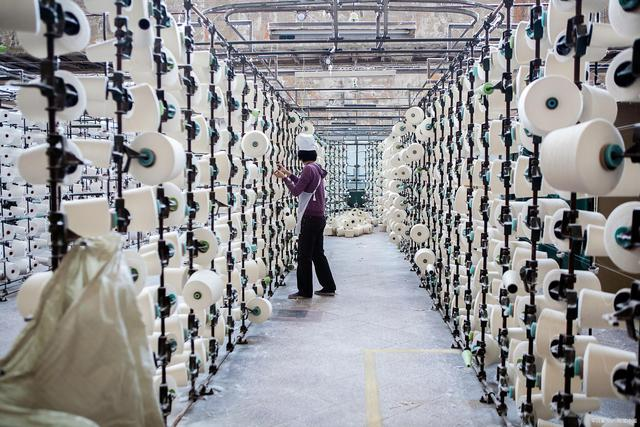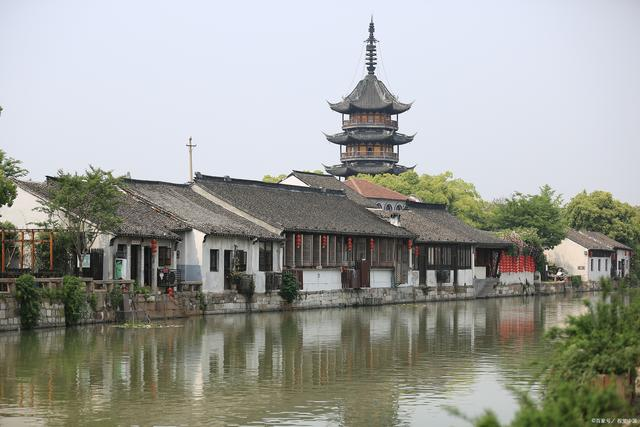China has the largest textile industry in the world and the most complete industrial chain with the most complete categories. Chinese textiles include yarns, fabrics, garments and so on. As early as 2015, China’s fiber processing volume reached 53 million tons, accounting for more than 50 percent of the world’s total. China is the world’s largest producer and exporter of textiles and apparel. China’s textile industry once led the world for a decade. China leads the world in apparel exports. The competitiveness of textile and garment industry, which is divided into textile industry and garment manufacturing industry, is the most competitive industry in China. It is the strongest in the world in terms of international market share, trade competitiveness index and realistic comparative advantage index.
China’s textile industry has a long history of development, as early as the Neolithic age has mastered the textile technology. The silk and flax textile technology in ancient China reached a very high level and enjoyed a good reputation in the world. The Ancient Roman Empire first spread silk through the silk Road and called China the “Land of silk”. China’s textile industry initially included chemical fiber, cotton textile, wool textile, hemp textile, silk, knitting, printing and dyeing, clothing, home textile, textile machinery and other industries. After years of development, the textile industry has gradually formed a modern textile industry with household textiles, clothing textiles and industrial textiles as three systems. In 2020, China’s textile industry fiber processing volume accounts for more than 50% of the world, and its export volume accounts for 1/3 of the world. It has always been the industry with the largest foreign trade surplus in China, and its per capita fiber consumption has reached the level of medium-developed countries in the world. In the past, China’s textile industry was mistaken for “sunset industry”, but now in the global counterparts, not only the largest, and the most complete industrial categories, the most complete industrial chain system, industrial science and technology in the forefront of the world, especially the domestic brand has been widely recognized in both domestic and international markets. Among the five industries (textile, home appliances, building materials, iron and steel, and high-speed railway) listed in the first list of world manufacturing industries in China, the textile industry ranks first.
The market share of China’s textile and garment industry ranks second in the world, six times that of Italy, seven times that of Germany and 12 times that of the United States almost a decade ago. China’s trade competitiveness index has been above 0.6 for a long time, and the garment trade competitiveness index has been close to 1 for a long time. The index of explicit comparative advantage is generally above 2.5, which indicates that the industry has strong international competitiveness. The productivity of China’s textile and garment industry used to be 9 times that of Italy and 14 times that of the United States, which undoubtedly means that this industry has strong international competitiveness. In particular, in the third decade of reform and opening up, China ranked first in the output of chemical fiber, yarn, cloth, woollen cloth, silk goods and clothing. In addition, according to relevant statistics from the United States, The European Union and Japan, in 2020, China accounted for 33%, 43.9% and 58.6% of total textile and apparel imports from the United States, the European Union and Japan respectively. Among them, Mask products from China dominated the market, accounting for 83%, 91.3% and 89.9% of mask imports from the US, EU and Japan respectively.
Compared with southeast Asian countries with lower costs, China has natural advantages: 1) China’s textile industry has a long history, complete raw materials and a particularly complete supply chain, which is the main reason for the return of orders during the epidemic. 1) The epidemic situation in China is stable, and China is the first to resume work and production. The industrial and supply chains are normal, and orders can be delivered as scheduled. 3) China’s textile industry is operated on an industrial automation platform with lower cost of mass production.
China’s famous textile hometown: Hebei Gaoyang. Gaoyang textile began in the late Ming Dynasty, xing in the late Qing Dynasty, prosperous in the early Republic of China, more than 400 years of inheritance, the county textile enterprises more than 4000. The annual home textile exhibition is a grand event of the national textile industry. It has the largest professional textile museum with the most complete historical materials and the largest county-level sewage treatment plant in the province. It is worth mentioning that gao Yang textile industry is very developed, towels, wool, blanket the three main products production accounting for 38.8%, 24.7% and 26% of the country’s total, is one of the country’s largest cotton distribution center, owns the country’s biggest towel professional wholesale market, gao Yang textile trade city, the country’s biggest blanket production cluster – XingNa carpet industry park.
China Light Textile City is located in Keqiao District, Shaoxing City, Zhejiang Province. Founded in October 1988, Shaoxing Keqiao has created countless wealth myths and become the international textile capital “covering the whole world”. China Textile City covers an area of 1.8 million square meters, with a total construction area of 3.9 million square meters. Every year, the cloth sold here accounts for 1/3 of the country and 1/4 of the world. In 2020, China textile City market groups achieved a turnover of 216.325 billion yuan. The transaction volume of China Textile City’s online and offline markets reached 277.03 billion yuan. It has ranked the first in China’s textile professional wholesale market for 32 consecutive years. It is now a large textile distribution center with complete facilities and a wide variety of products in China, and also a large light textile professional market in Asia.
China still leads the world in the field of chemical fiber filament. The world’s total fiber production is about more than 90 million tons. 70 percent of the 90 million tons of fiber production is chemical fiber, about 65 million tons, of which chemical fiber filament is about 40 million tons. It can be seen that chemical fibers are dominated by filaments. Most of the more than 40 million tons of chemical fiber filament in the world are produced in China.
China is the largest cotton producer and consumer in the world. With domestic cotton production unable to meet demand, China still needs imports from abroad to supplement demand. But mainly imported high-end raw cotton. The cotton import volume in 2020 was 2.1545 million tons, up 16.67% year-on-year. Among them, the United States, Brazil and India are the top three import sources. In terms of domestic supply, cotton planting in China is mainly distributed in the Yangtze river and Yellow River basins and the production areas in Xinjiang, in which the output of xinjiang production areas accounts for about 45% of the national total output, that of the Yellow River basin accounts for 25%, and that of the Yangtze River basin accounts for about 10%. It is worth mentioning that xinjiang cotton is the world’s top quality goods, as China’s top quality commodity cotton production base, xinjiang’s cotton output in 2020 was 5.161 million tons, accounting for 87.3% of the country, accounting for one-fifth of the world. It can be said that it is because of xinjiang’s high yield and high quality of cotton that China’s core strength in the world’s first cotton producing country is supported.
Post time: Jul-07-2022

